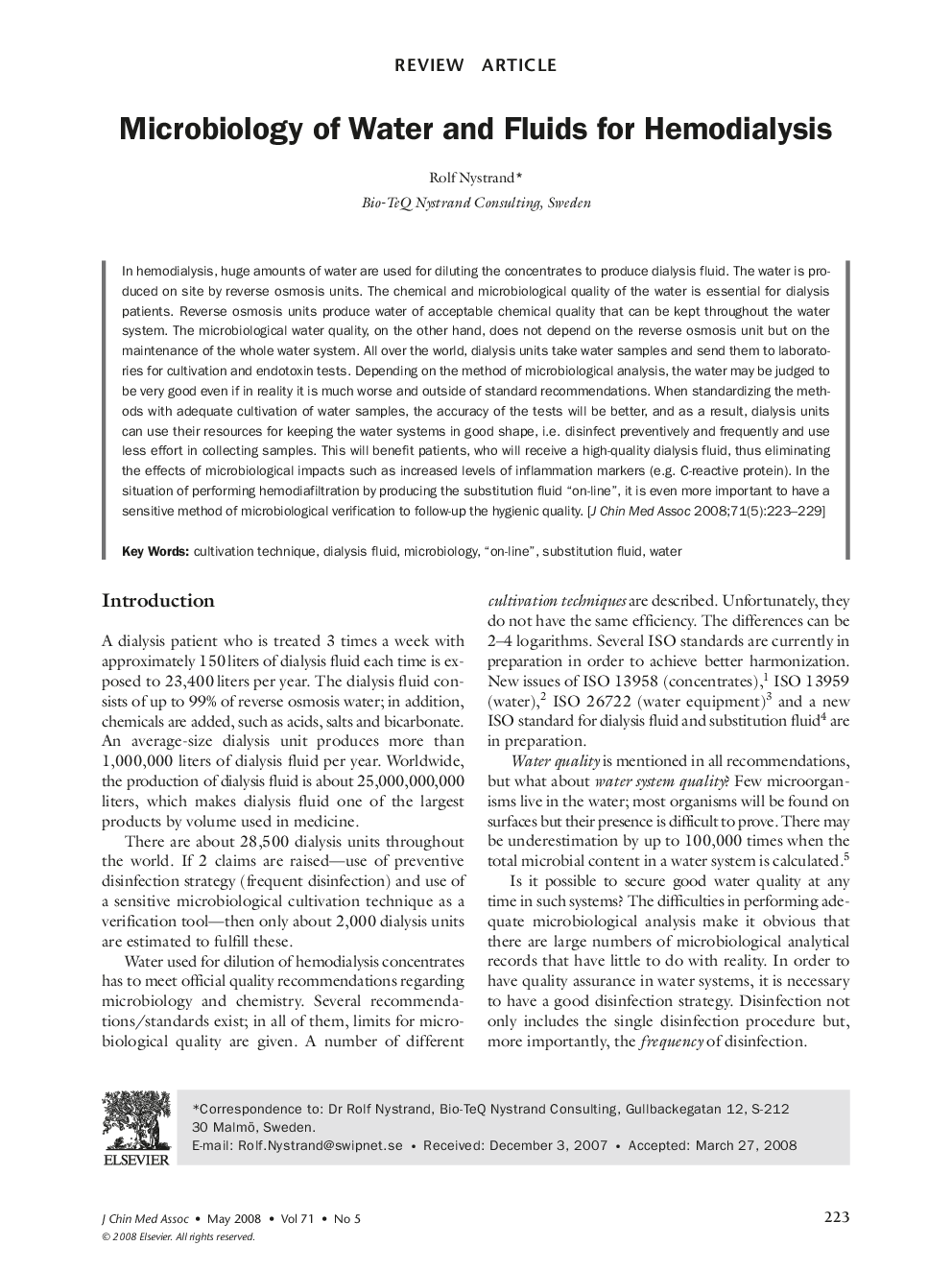| کد مقاله | کد نشریه | سال انتشار | مقاله انگلیسی | نسخه تمام متن |
|---|---|---|---|---|
| 3477305 | 1233317 | 2008 | 7 صفحه PDF | دانلود رایگان |

In hemodialysis, huge amounts of water are used for diluting the concentrates to produce dialysis fluid. The water is pro-duced on site by reverse osmosis units. The chemical and microbiological quality of the water is essential for dialysis patients. Reverse osmosis units produce water of acceptable chemical quality that can be kept throughout the water system. The microbiological water quality, on the other hand, does not depend on the reverse osmosis unit but on the maintenance of the whole water system. All over the world, dialysis units take water samples and send them to laborato-ries for cultivation and endotoxin tests. Depending on the method of microbiological analysis, the water may be judged to be very good even if in reality it is much worse and outside of standard recommendations. When standardizing the meth-ods with adequate cultivation of water samples, the accuracy of the tests will be better, and as a result, dialysis units can use their resources for keeping the water systems in good shape, i.e. disinfect preventively and frequently and use less effort in collecting samples. This will benefit patients, who will receive a high-quality dialysis fluid, thus eliminating the effects of microbiological impacts such as increased levels of inflammation markers (e.g. C-reactive protein). In the situation of performing hemodiafiltration by producing the substitution fluid “on-line”, it is even more important to have a sensitive method of microbiological verification to follow-up the hygienic quality. [J Chin Med Assoc 2008;71(5):223–229]
Journal: Journal of the Chinese Medical Association - Volume 71, Issue 5, May 2008, Pages 223-229